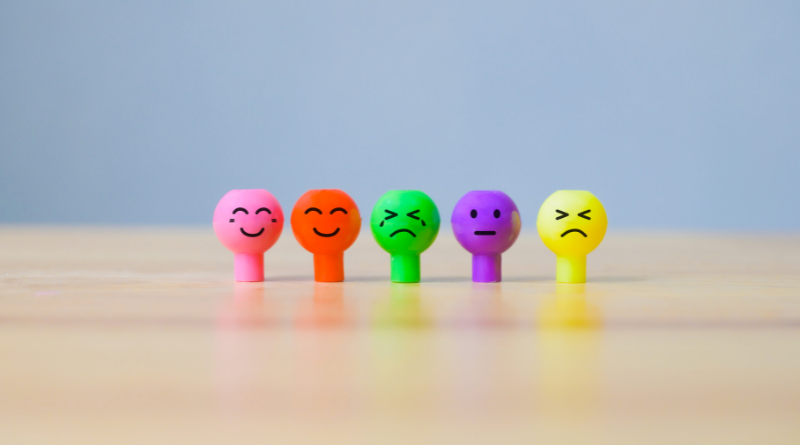Do you feel like reading this article?
A dive into the muddy waters of emotional motivation and its link to conversion.
Therapy teaches us about human experience
One of the most common things people who have had Cognitive Behavioural Therapy (CBT) learn is the connection between different parts of experience.
We are taught that our experience can be broken down into the following elements. (I will give little examples of each based on imposter syndrome as this is something many of us can relate to).
- Cognitions/thoughts – “I don’t deserve/I can’t do this job”.
- Emotions/feelings – anxiousness, embarrassment.
- Behaviours/actions – avoiding seeking help, comfort eating.
- Physiological responses/bodily sensations – headaches, back pain.
The CBT cycle teaches us that all parts of our experience are connected and are important to what makes us human.
Something that often gets lost in a world of Google Analytics and big data is that your target audience are human beings that go through this full range of experience. It doesn’t matter if you are a B2B or B2C business, losing sight of what makes people tick will harm your ability to convert.
Emotions and cognitions often get confused
When a decision needs to be made and you are asked for your opinion, how often have you said you “feel” like a decision is the right one?
Most of us do it, even though what we are saying is technically wrong. We can’t “feel” that a decision is the right one, because a decision is a chosen course of action and not an emotion (like happiness or concern). We should really be saying that we “think” a decision is the right one every time we are asked our opinion.
People make emotion-based decisions
So why do we end up saying that we “feel” a decision is the right one so often? Well, I have a theory.
Most of us make decisions that are largely based in emotion. Practically speaking, we couldn’t make a fully logical decision about every choice, because it would take us hours to run through all the pros and cons just to make everyday choices.
So we rely on our emotion or “gut feeling”, and end up saying that we “feel” like taking a decision would be a good one.
“Logical” choices are also influenced by emotion
You may be wondering something along the lines of; “What about the decisions that go beyond whether you want a white chocolate cookie or not?” (By the way – if you were to ask me, the answer would be yes to the cookie, the answer would always be yes).
We use emotion even in circumstances where we could swear we do not. We will sometimes think that we made a purely rational choice, and even pride ourselves on being able to do so. But to actually put emotion aside completely is not only impossible for most, but also likely to result in a bad decision.
There are other factors involved in decision making (and it all gets rather complicated). But a well-documented study of damage to the orbitofrontal cortex (a part of your brain heavily involved in linking emotion and reward), showed that damage to this region of the brain significantly decreases the ability to make effective choices.
This means that when a person with a typical brain is trying really hard to rely on logic to make complex and important decisions, they will also be using emotion. And this is a good thing, because the decision made is likely to be better for it.
Don’t ignore emotional benefits when selling
All too often we see a focus on product or service features rather than the benefits of those features. Even when benefits are given, sometimes these lack the important link to how the benefit is going to make the buyer feel.
Let’s say you are selling a revolutionary anti-wrinkle pill. The pill contains [insert pseudo-scientific term here] – this is its feature. The benefit is that this ingredient will make you look younger without you having to invest in a time-consuming skincare routine, that ultimately doesn’t work.
The emotional benefit is the confidence it gives you in social situations. This confidence means you engage more with others and your brain releases more oxytocin and endorphins, (chemicals that make you feel happier).
Emphasise emotion
The end benefit of our pill (feeling happier) could be achieved by working on self-worth. No one actually needs the pill to feel happier; in fact, you could take the pill and not feel any happier for it.
But believing that it will make you happier (and because it requires very little effort to take a pill compared to working on your self-worth), you end up feeling it is worth “giving it a go”, even if you are sceptical.
If our imaginary company only focused on the fact that the pill works and is less time consuming than the alternative, they would probably sell a lot. After all, it would be appealing to a large population. But by emphasising the emotional motivation behind the decision to buy, they would likely sell a lot MORE.
The emotional benefit of feeling happier exists in the minds of potential customers without it being emphasised by the company. It is their (likely subconscious) motivation to buy and will therefore result in sales. By focusing on this motivation in marketing and on the website, it makes this motivation stronger, increasing the number of people who buy.
Emotion is also important in B2B conversions
You may think that in B2B conversions emotion takes a back seat. The transaction seems less personal, and therefore the target audience is likely to be much more logical. Focusing on emotional benefits in your sales copy therefore may not be a high priority.
But remember what we talked about above? People need to engage emotion to make effective decisions. If you tap into their emotional motivator, you are more likely to convince them to buy than if you lay out a very compelling, but emotionless argument.
To see how important emotion is to B2B conversions you just have to think about networking. We spend time interacting with others in a similar role to ours in order to make human connections. These human connections often lead to opportunities that a web page simply never could, (including conversions/sales).
Remember there is a human behind every statistic
Motivation and emotion fascinates me, and I hope that this short introduction to how they connect to the worlds of marketing and conversion has spurred your desire to learn more.
Data and increasingly sophisticated tracking software is helpful when trying to understand your target audience. But it will never be able to tell you how to connect with them.
For that, you need to be human – (unless of course machines become truly sentient one day)!
Originally posted 2022-08-11 16:27:47.
- Do you feel like reading this article? - April 12, 2025






